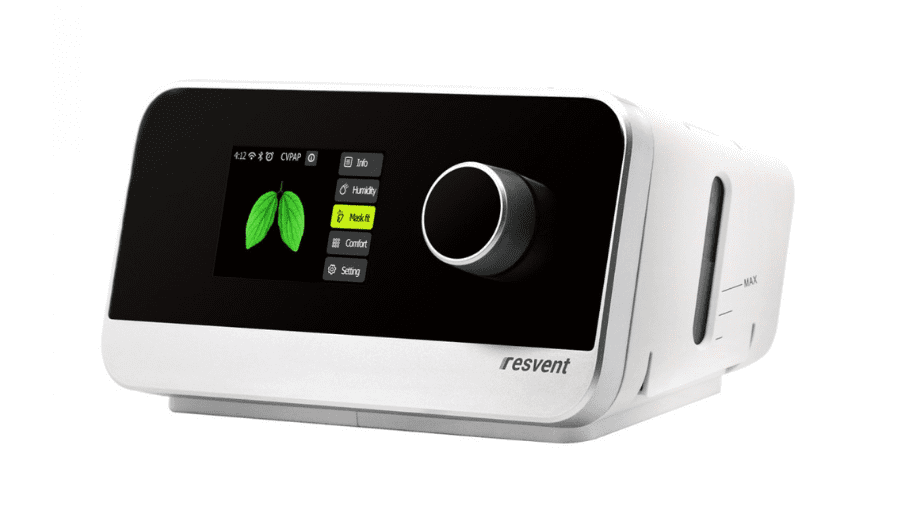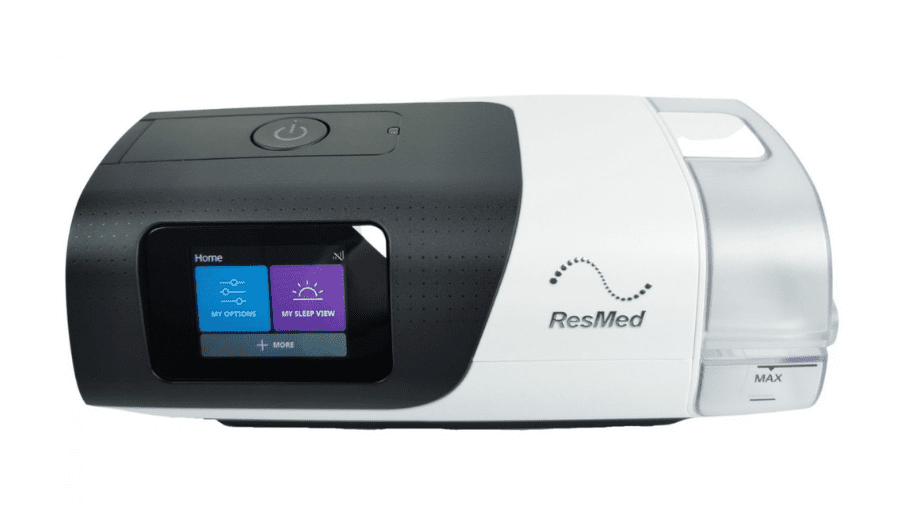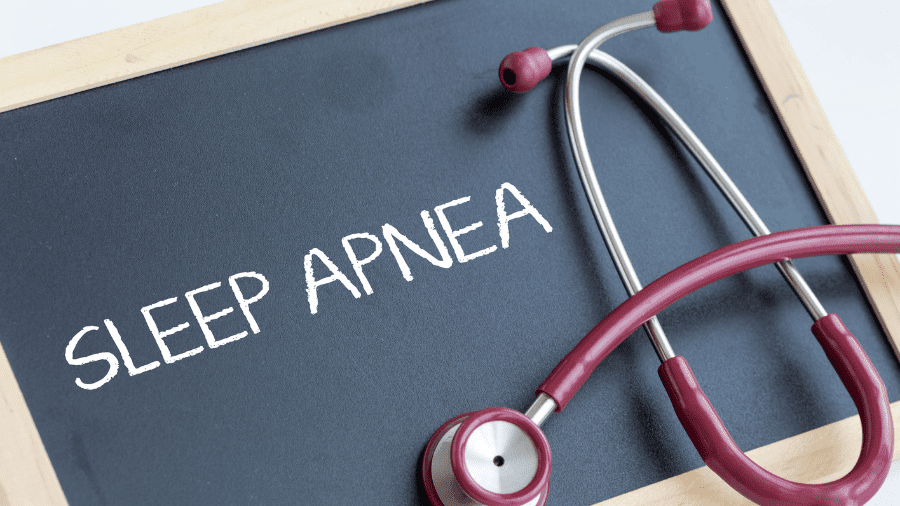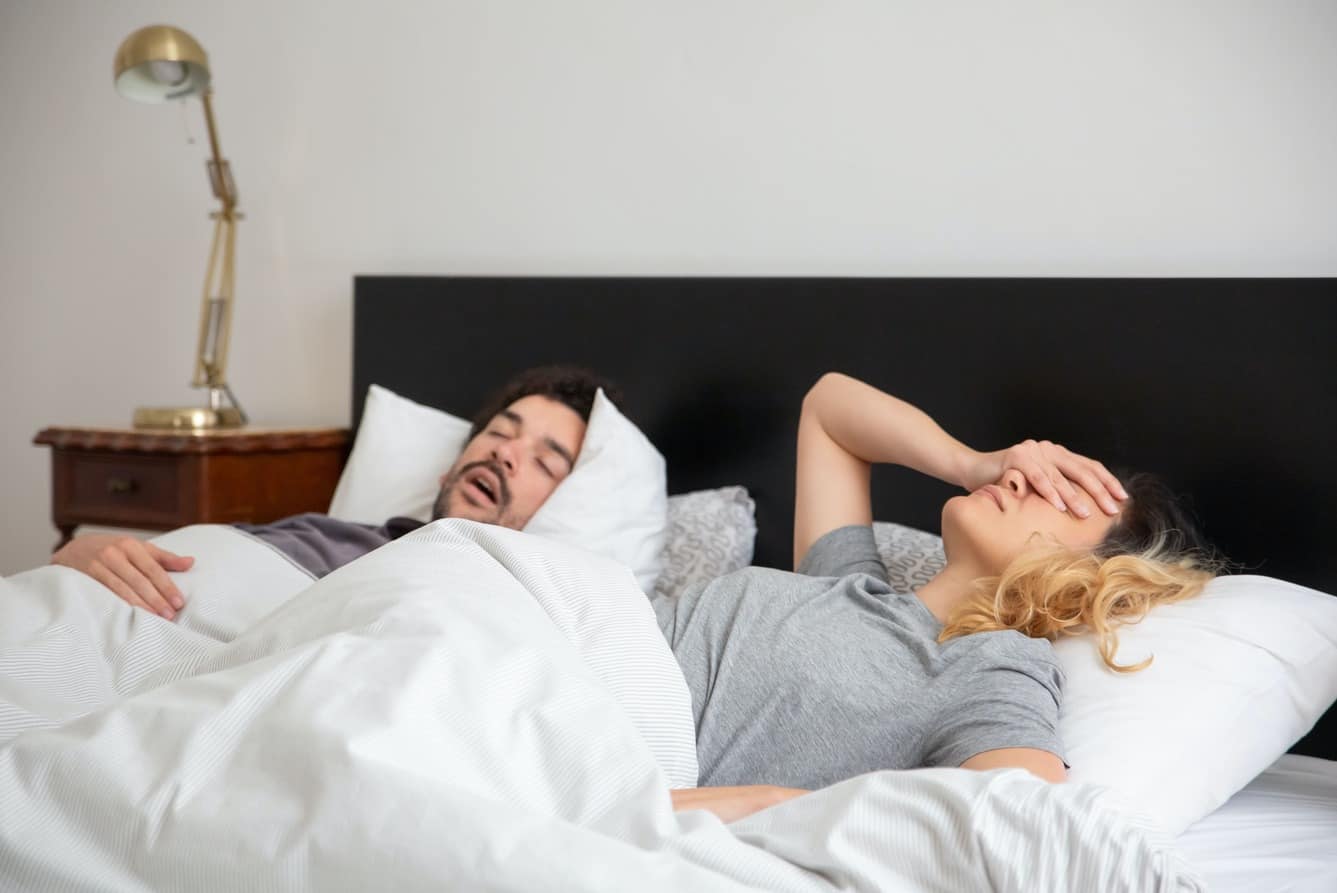Sleep apnea is a sleep disorder that is associated with feeling tired, hypersomnia, insomnia, and other causes and symptoms. Sleep apnea can be diagnosed by taking a sleep study. And the prescribed treatment normally includes the use of a CPAP machine.
In this article, we are going to talk about some of the most common symptoms of sleep apnea and discuss when you should consider getting a sleep study done to potentially diagnose it.
We’ll then look at what your options are if you do have sleep apnea and how these might help you feel refreshed after a night’s sleep once more.
Sleep Apnea Symptoms
Ok, let’s start at the top. You are likely reading this because you have been experiencing incessant sleepiness even after a full night of rest and are wondering if you could potentially have sleep apnea.
Or maybe someone has told you – gently or otherwise – that you snore too loudly. These are two of the most common symptoms of sleep apnea and are a good indication that it might be prudent to dig a little deeper.
Let’s talk about what qualifies to be considered one of these common symptoms. We mentioned sleepiness even after a full night of rest. In its extreme case, this is known as hypersomnia, and this should be a consistent pattern to qualify as a sleep apnea symptom.
Many causes outside of having sleep apnea could lead to feeling tired during the day or even for a more prolonged period. High stress, a change of medication, or maybe you’re training for a marathon and that is causing you to be tired and miserable.
Or even grief or boredom can lead to excessive daytime sleepiness, even after a good night’s rest. So, feeling tired a lot doesn’t necessarily mean that you have sleep apnea.
But how about loud snoring? Nearly everyone snores to some degree at certain times – yes, even the love of your life. But for some people, snoring can be a chronic problem and indicate an underlying health condition.
First Things to Try If You Suspect Sleep Apnea
The first litmus test is to try to sleep in a new position, ideally on your side, and see if that reduces the amount of snoring. And of course, you’d need to get feedback from someone who is familiar with how much you snored beforehand – this is hard stuff to monitor yourself!
You could also try making a lifestyle change, like losing weight or avoiding alcoholic consumption, especially close to bedtime. But if none of this applies to you or you still want to rule out the possibility of sleep apnea, then the next step to take would be to have a sleep study done, which we’ll get to in a bit.
Less Subtle Symptoms of Sleep Apnea
These include:
- Insomnia, which is the opposite of hypersomnia, where you cannot fall asleep at night or stay asleep easily;
- Gasping for breath while you sleep;
- Consistently waking up in the morning with a strong headache or very dry mouth;
- Even irrational irritability can be a symptom;
- And probably the most extreme symptom of sleep apnea is where you have episodes in which you stop breathing entirely during sleep.
As you can tell, a lot of these are potentially serious symptoms of sleep apnea which is a potentially serious medical condition that should be treated if you suspect that you have it. And, as we mentioned earlier, the way you find out if you do or not is to take a sleep study.
A Sleep Study to Diagnose Sleep Apnea
A sleep study can be conducted by your doctor, and if they determine that you do indeed suffer from sleep apnea, they will provide you with a prescription to purchase a CPAP device at that time.
Alternatively, if you would prefer to avoid the hassle and cost of visiting a doctor, then you can purchase a disposable in-home sleep study kit through Respshop.com, which includes a 15-minute online consultation with a sleep physician.
You’ll receive a handy little gizmo that attaches to your finger while you sleep in your normal environment. This device tracks your sleep patterns over the course of multiple nights and transmits that data to your healthcare provider.
At the end of this, your results are evaluated by a certified sleep physician who will provide you with a sleep report and prescription if you qualify.
Whichever method you choose, once you have your prescription in hand, you can purchase a CPAP device. Talk to your insurance company at this point to see if you qualify to have the cost of a device offset or covered entirely.
Quick note: even if you are purchasing a machine with cash money, you still need a prescription to buy one.
How CPAP Treats Sleep Apnea
It would be helpful at this point to talk about what is happening inside your body if you are suffering from sleep apnea because that will lead to how a CPAP device will actually help to treat that and give you the best night’s sleep possible.
Sleep apnea is a sleep disorder in which breathing repeatedly stops and starts. Obstructive Sleep Apnea (OSA) is the most common form of sleep apnea.
OSA occurs when the muscles at the back of your throat relax and your airway narrows or even closes as you breathe in. This, in turn, means that you don’t inhale enough air.
Your brain senses this closure and briefly wakes you up in order to reopen the airway. This process is usually so quick that you don’t even remember it.
But for someone suffering from sleep apnea, this could be happening anywhere from 5-30 times an hour all night long, every single night. This prohibits you from having deep, restful phases of sleep. Now, do you see why you’re tired a lot?
Knowing that, how will a device like this help to treat sleep apnea? And which device is right for you? Because there are many different types of machines – there are CPAP, BiPAP, APAP, and more.
How CPAP Works
Whichever type of CPAP machine we are talking about, the ‘PAP’ portion of the name stands for Positive Air Pressure. With all of these machine types, pressurized air is generated via a compressor within the unit housing.
This air then travels through an air filter, up the hose, and into a cushioned mask that covers your nostrils or your whole nose, or a full mask that is shaped like a triangle and covers your nose and mouth.
Most machines also include a humidifier that prevents your nose and mouth from drying out. Effectively, the machine pushes a gentle but steady flow of air into your nose and mouth as you sleep. This keeps your airway open and helps you breathe normally.
We dive deeper into the subtle differences between each type of machine in this article in our knowledge base. A prescription for a CPAP device that you get from a medical professional would allow you to purchase one of these variants.
Here are a couple of examples if you’re at the stage of researching specific models.

This is the Resvent iBreeze, which is a great entry-level unit for which we have done a full hands-on review.
At the other end of the scale, is the RedMed AirSense 11, which was a long-anticipated release to the CPAP industry and is loaded with great features to get you set up with your sleep therapy, especially for first-time users.

Again, we have made a deep dive review on it, as well.
So, there we go. That’s a quick overview of what sleep apnea is, the common symptoms associated with it, and the way to treat it – along with some examples of units.
We hope this guide was helpful to you. If you are new to the world of CPAP, no doubt you have many questions floating around that we’d love to help answer.
Respshop.com has respiratory therapists, polysomnographic techs, and a nurse on staff to assist you when needed. Stay updated with our latest content by subscribing to our mailing list on this page as well as visiting and subscribing to our YouTube channel.
And wherever you are, sleep tight!






